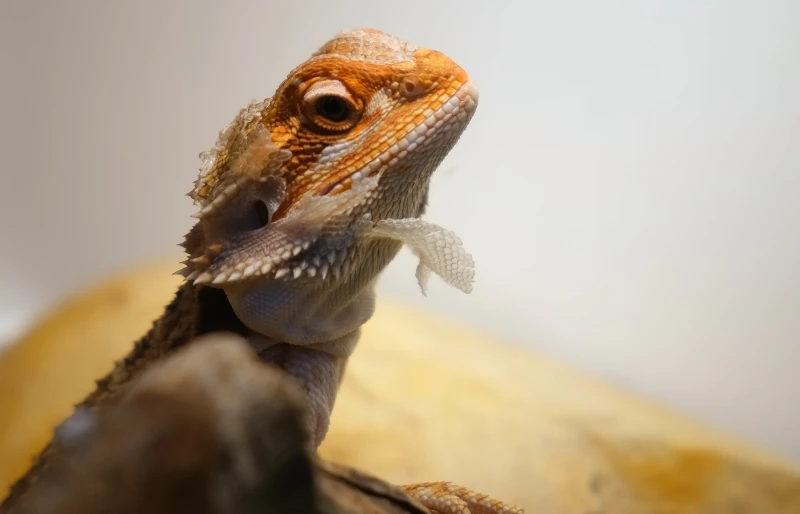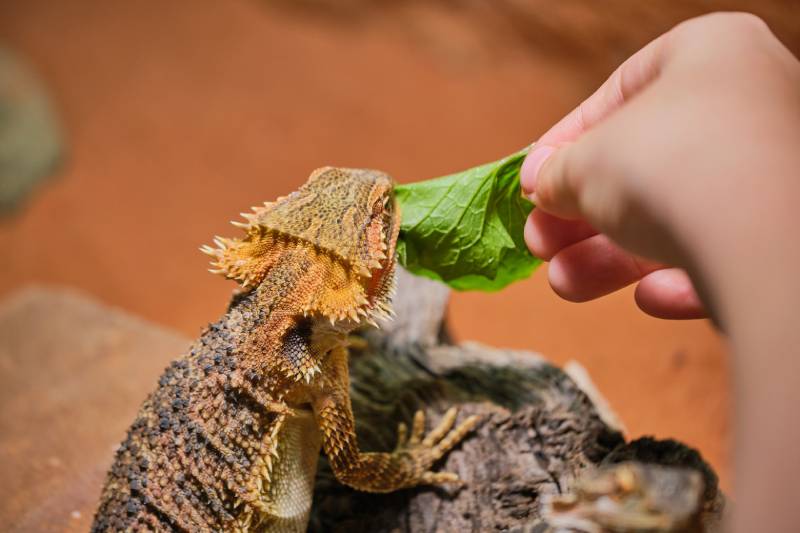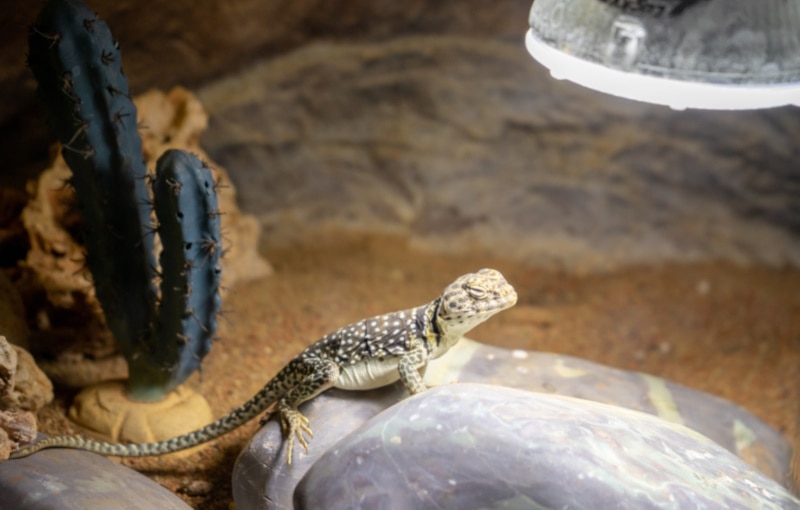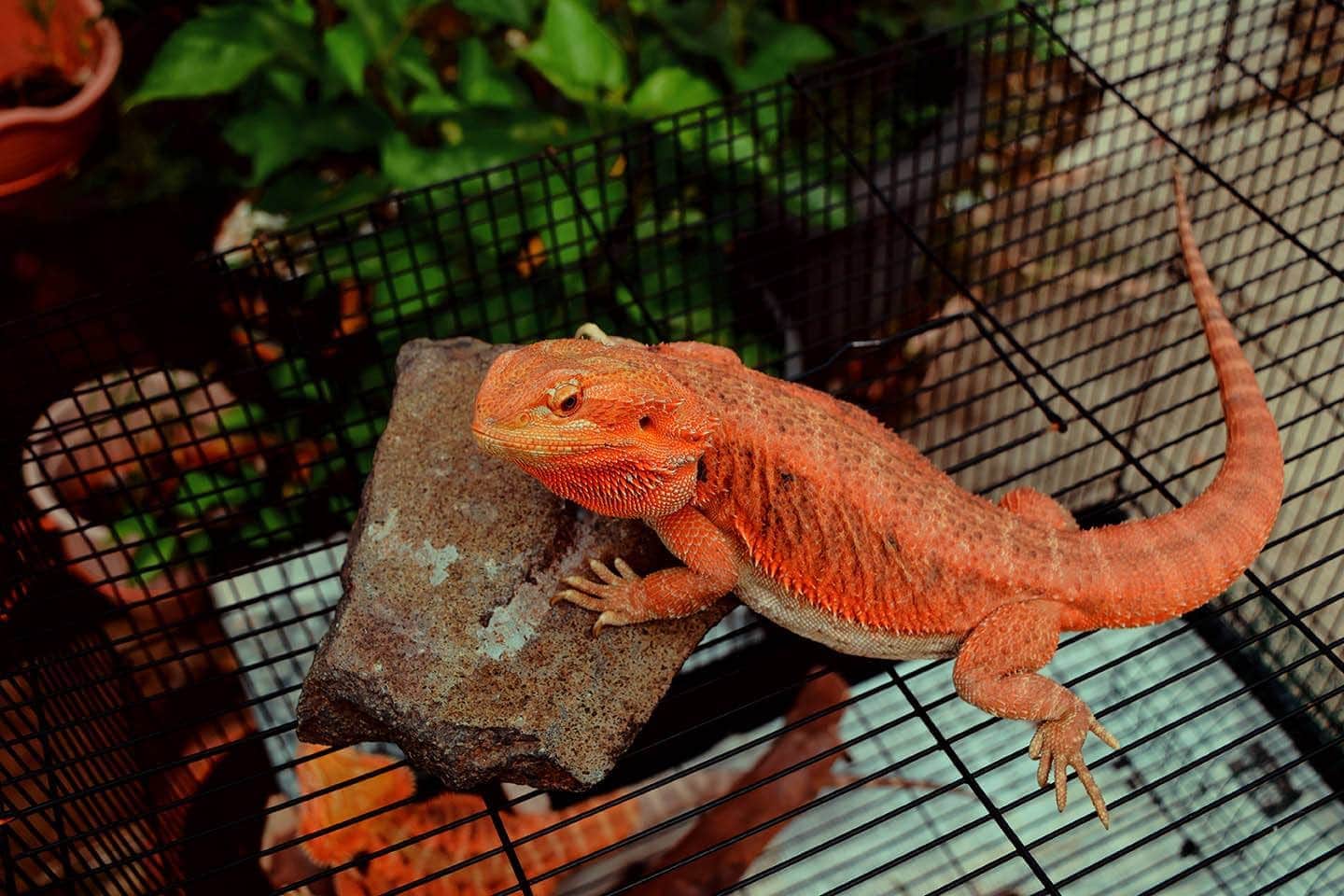Do Bearded Dragons Eat Their Shed? Vet-Approved Facts & FAQ
Updated on

Skin shedding is a common phenomenon in the reptile family, including bearded dragons. They shed their skin to make enough room for their body to grow. But like other members of the family, bearded dragons eat their shed. Yes, really!
While this behavior is mostly observed in wild animals, domestic ones also don’t let their old skin go to waste. So, if you find your bearded dragon munching on their shed skin, there is nothing to worry about. This can actually be good for your bearded dragon.
Eating shed helps these animals avoid predators in the wild, reabsorb nutrients, and meet their calcium requirements. So, as long as their old skin is clean, it shouldn’t cause any adverse effects on your pet. Let’s learn more about this behavior in bearded dragons.
Is It Normal for Bearded Dragons to Eat Their Shed?
Bearded dragons eating their own shed helps these reptiles reuse the nutrients from the shed and survive in the wild, especially when little food is available.
However, domestic bearded dragons may not depict this behavior as frequently. So, if your pet doesn’t eat their shed, it is as normal as them eating it. No need to worry!
Eating shed doesn’t pose any health risks in bearded dragons. These animals will stay healthy as long as their old skin doesn’t carry harmful bacteria or fungi. You can ensure that by keeping their enclosure clean.
Do Bearded Dragons Shed a Lot?
Bearded dragons usually shed only a few times a year. However, their shedding frequency varies depending on age and growth rate.
A newborn bearded dragon will shed every 1 to 2 weeks on average until they are 6 months old. These reptiles are continuously growing during this period, so they need to outgrow their old skin to develop a new one. This shedding takes about 3 consecutive days to complete.
At age 6 to 18 months, juvenile bearded dragons shed every 6 to 8 weeks. Their growth rate won’t be as fast as hatchlings.
As they become adults, their growth rate slows down along with the shedding level. They will shed once or twice a year, primarily to replace the damaged, old skin with a new, healthy one. Adult bearded dragons can take about 3 weeks to complete their shedding.
So, if you have a senior bearded dragon, you will only see them shedding once or twice a year. However, if their skin gets damaged or they have underlying health conditions they can shed more frequently.

 The 3 Reasons Bearded Dragons Eat Their Shed
The 3 Reasons Bearded Dragons Eat Their Shed
One reason for a bearded dragon eating their shed is hunger. While that might be true in some cases, several other reasons are thought to make your beardie more likely to eat their skin. Let’s get into more detail.
1. Nutritional Requirement
The skin of bearded dragons contains nutrients, such as protein, keratin, and particularly calcium. All of these are important for the reptile’s healthy growth and development, helping maintain strong bones and prevent other health problems.
2. Natural Instincts
Wild bearded dragons naturally eat their shed to prevent predators from identifying their location. Their shed skin leaves a scent trail for other animals, which may lead them toward the beardie’s home. So, eating their shed helps them reduce their visibility and avoid unnecessary attention.
Over time, this natural behavior evolved into a survival mechanism, and all types of bearded dragons adopted it, whether out in the wild or in captivity. So, even when your beardie is not in a threatening situation, they may eat their shed regardless.
3. Cleanliness
Another thing that may persuade bearded dragons to eat their shed is cleanliness. During the shedding period, the enclosure of these reptiles gets filled with lots of shed skin, creating a dirty and unhygienic environment. It can be harmful to the beardie’s health and safety.
Thus, as a responsible beardie owner, you must clean their home on your own too. Remove all unnecessary debris from their enclosure regularly and provide them with clean water for bathing and drinking. It will keep the animal’s skin clean, thereby preventing many skin-related issues.

Should You Stop Your Bearded Dragons From Eating Their Shed?
Eating shed skin is safe for bearded dragons if their home is clean and free of debris, feces, or uneaten food. These things carry disease-causing bacteria, which can then be present on the shed.
So, as long as their enclosure is neat, you can let your beardie eat the shed skin without any worries.
When it comes to wild bearded dragons, their shed skin also serves as a food source when there is scarcity. Their shed skin won’t only keep them surviving but also help fulfil nutritional needs, including calcium.
How to Know Your Bearded Dragon is Eating Their Shed?
You may suspect your bearded dragon is ingesting their shed when you know they have shed but you can’t locate it in their enclosure.
They may also have a reduced appetite after ingesting the shed, although it is not uncommon for them to have less of an appetite and not be themselves during the shedding process anyway.
Tips to Prevent Bearded Dragon From Ingesting Their Shed
While it isn’t usually necessary, here are some tips to help you stop your bearded dragon from consuming their old skin:
- Fulfill their Nutritional Needs. Your bearded dragon may be more inclined to eat their shed if their nutritional needs are not met. A balanced diet for a beardie includes veggies and insects. Make sure to provide them with these at the correct ratio for their age.
- Include Calcium in Their Diet. Many pet owners don’t focus on including calcium in their beardie’s diet—an essential nutrient for bone strength—forcing them to eat their shed to help fulfil its need. Speak to your vet to get the right calcium supplements for your beardie
- Create a Favorable Environment. Sometimes, the old skin remains stuck to the bearded dragon’s body, forcing them to eat it to get rid of it. You can facilitate your pet’s shedding by ensuring a proper humidity level in their enclosure. Make sure there are logs, rocks and other rough surfaces for your dragon to rub up against, making sure none are sharp.
- Give Them a Gentle Rub During Bathing. While bathing cleans the beardie’s skin from harmful bacteria, it may leave the old skin behind. So, give your pet a gentle rub with a clean cloth to remove the shed and reduce their urge to eat it.
- Maintain the Enclosure’s Cleanliness. As a responsible pet owner, you must handle your bearded dragon’s cleanliness needs. Ensure their home is free of feces, old skin, and debris to prevent your pet from eating them and getting sick.
- Monitor Your Pet’s Behavior. Your bearded dragon may still eat their shed even after you ensure everything above. In that case, you should just let them be. As long as you maintain their cleanliness, there shouldn’t be anything to worry about. However, if you feel your pet is behaving abnormally or may be stressed then consult with your vet.

Conclusion
Bearded dragons shed skin multiple times a year, depending on their age and growth rate. Juvenile beardies shed more since their growth rate is high, while the adult ones have a relatively slower growth rate and shed less often. Regardless of their age, bearded dragons often like to eat their old skin.
They may do so to fulfil their nutritional needs, avoid predators, or simply out of their instincts. You should let your beardie eat their old skin as long as you maintain cleanliness in their enclosure.
This behavior is safe for these reptiles, so there is nothing to worry about!
Featured Image Credit by: Vadim Zakharishchev, Shutterstock












